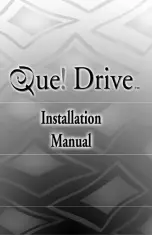
Troubleshooting
Check for motor overheating.
Check if the motor is mechanically overloaded
Check that the motor current set in
1-24 Motor
Current
is correct.
Ensure that Motor data in parameters 1-20
through 1-25 are set correctly.
If an external fan is in use, check in
1-91 Motor
External Fan
that it is selected.
Running AMA in
1-29 Automatic Motor Adaptation
(AMA)
tunes the frequency converter to the
motor more accurately and reduces thermal
loading.
WARNING/ALARM 11, Motor thermistor over temp
The thermistor might be disconnected. Select whether the
frequency converter gives a warning or an alarm in
1-90 Motor Thermal Protection
.
Troubleshooting
Check for motor overheating.
Check if the motor is mechanically overloaded.
Check that the thermistor is connected correctly
between either terminal 53 or 54 (analog voltage
input) and terminal 50 (+10 V supply) and that
the terminal switch for 53 or 54 is set for voltage.
Check
1-93 Thermistor Source
selects terminal 53
or 54.
When using digital inputs 18 or 19, check that
the thermistor is connected correctly between
either terminal 18 or 19 (digital input PNP only)
and terminal 50.
If a KTY sensor is used, check for correct
connection between terminals 54 and 55
If using a thermal switch or thermistor, check that
the programming if
1-93 Thermistor Resource
matches sensor wiring.
If using a KTY sensor, check the programming of
1-95 KTY Sensor Type, 1-96 KTY Thermistor
Resource
, and
1-97 KTY Threshold level
match
sensor wiring.
WARNING/ALARM 12, Torque limit
The torque has exceeded the value in
4-16 Torque Limit
Motor Mode
or the value in
4-17 Torque Limit Generator
Mode
.
14-25 Trip Delay at Torque Limit
can change this from
a warning only condition to a warning followed by an
alarm.
Troubleshooting
If the motor torque limit is exceeded during ramp
up, extend the ramp up time.
If the generator torque limit is exceeded during
ramp down, extend the ramp down time.
If torque limit occurs while running, possibly
increase the torque limit. Be sure the system can
operate safely at a higher torque.
Check the application for excessive current draw
on the motor.
WARNING/ALARM 13, Over current
The inverter peak current limit (approximately 200% of the
rated current) is exceeded. The warning lasts about 1.5
secs., then the frequency converter trips and issues an
alarm. This fault may be caused by shock loading or fast
acceleration with high inertia loads. If extended mechanical
brake control is selected, trip can be reset externally.
Troubleshooting
Remove power and check if the motor shaft can
be turned.
Check that the motor size matches the frequency
converter.
Check parameters 1-20 through 1-25 for correct
motor data.
ALARM 14, Earth (ground) fault
There is current from the output phases to earth, either in
the cable between the frequency converter and the motor
or in the motor itself.
Troubleshooting:
Remove power to the frequency converter and
repair the earth fault.
Check for earth faults in the motor by measuring
the resistance to ground of the motor leads and
the motor with a megohmmeter.
Perform current sensor test.
ALARM 15, Hardware mismatch
A fitted option is not operational with the present control
board hardware or software.
Record the value of the following parameters and contact
your Danfoss supplier:
15-40 FC Type
15-41 Power Section
15-42 Voltage
15-43 Software Version
15-45 Actual Typecode String
15-49 SW ID Control Card
15-50 SW ID Power Card
15-60 Option Mounted
15-61 Option SW Version
(for each option slot)
ALARM 16, Short circuit
There is short-circuiting in the motor or motor wiring.
Remove power to the frequency converter and repair the
short circuit.
Warnings and Alarms
VLT
®
HVAC Drive D-Frame
Operating Instructions
MG16D102 - VLT
®
is a registered Danfoss trademark
49
8
8
















































